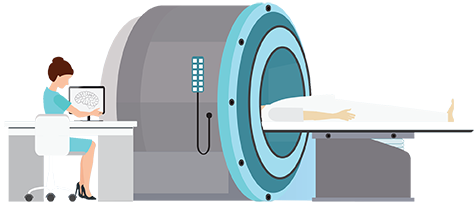

If you are looking for a career in health care, then it’s likely that you have heard of radiographers and radiologists. You know that they work in the medical field, but you may not be exactly sure what they do. So, what is radiology? And, what is the difference between a radiographer and a radiologist?
Radiology is a field of medicine that uses medical imaging in order to diagnose and treat different injuries and illnesses. Some of the radiological imaging techniques that are commonly used are X-ray, computer tomography (CT scans), and magnetic resonance imaging (MRI). Ultrasound, nuclear medicine, and positron emission tomography (PET) are also radiological techniques.
A radiographer is the professional who actually prepares and runs the imaging equipment. In the past, radiographers have often been called technicians. For instance, someone who took X-rays may have been referred to as an “X-Ray tech.” At the time, most of the training that technicians received was “on the job.” Furthermore, they were limited by the technology that was available. However, due to the level of education and training that is required of today’s radiographer, the term “technician” has become obsolete. The preferred term is now “technologist.”
These days, there is much more to being a radiographer than in the past. To become a technologist, radiographers must complete two years at an accredited school (BLS.gov/ooh, 2012). As a radiographer, you may begin your career taking X-rays. However, you may wish to move into more specialized areas of the field – including CT, MRI, or ultrasound – if you so desire. As with most jobs in the medical field, you may need to complete continuing education credits in order to maintain your license as a radiographer (BLS.gov/ooh, 2012).
A radiologist, however, is either a medical doctor (M.D.) or a doctor of osteopathic medicine (D.O.) who specializes in reading the medical images taken by the radiographer. Using these images, the doctor is able to diagnose and treat illnesses and injuries that may be present in the body. Radiologists may also use radiation treatments on patients suffering from certain types of cancer.
In order to become a radiologist, you must first graduate from an accredited medical school. After passing a licensing exam, radiologists will typically need to complete a four-year residency. During this time you may study the effects of radiation on the human body, radiation safety and protection, as well as many other topics. Once your residency is complete, you may wish to continue your education by completing a one-year fellowship with a particular specialty focus – such as cardiovascular radiology, nuclear medicine, or breast imaging. All told, a radiologist will usually have four to six years of training pos
Prospective students have much to consider before deciding on a career in radiology. Radiology can provide an excellent career path for people of all interests and skills. The length of time that a prospective student wishes to spend in school can certainly be a determining factor. Becoming a radiographer presents the shortest period of training before entering the workforce. However, studying to become a radiologist can be very rewarding as well. The choice is yours to make — a possible career in radiology awaits.